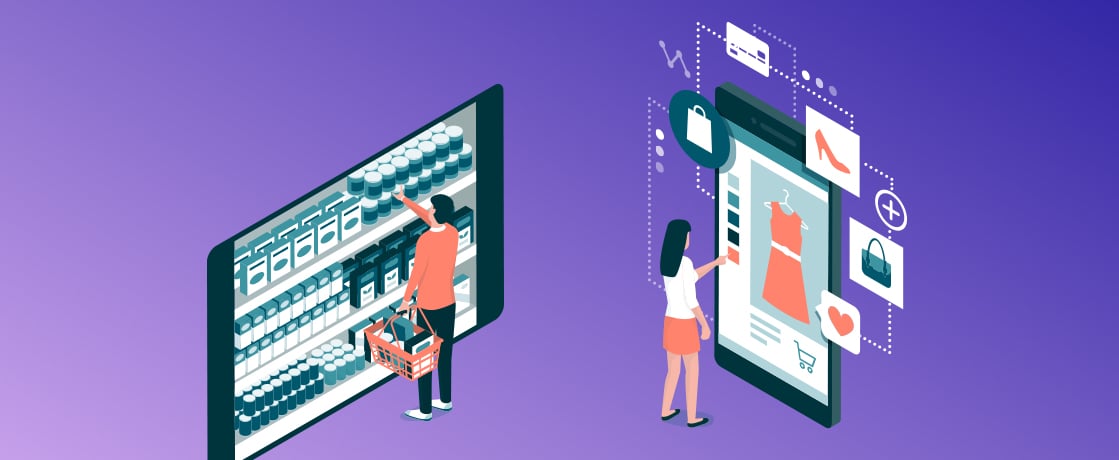At a recent virtual event for the retail industry, one of the participants from China mentioned an interesting paradox. They noted that their brick-and-mortar customers were spending on average much less time in the store yet were spending more money while they were there. The store team concluded that their customer must be researching online first in order to minimize the amount of time they need to spend in the store itself.
Maximizing both online and offline to fuel each other has become one of the top priorities of retailers today. A recent Harvard Business Review article noted that “while e-commerce will continue to be an essential element of retail strategy, the future success of retailers will ultimately depend on creating a cohesive customer experience, both online and in stores.” While ecommerce sales will continue to grow, Euromonitor research indicates that 78 percent of all purchases will still be made in-store by 2024. Google’s own research “shows the pandemic has made people more flexible about whether they buy online or offline” with 73 percent of people in their study saying they are channel-agnostic, compared with 65 percent pre-pandemic. How can retailers be prepared for this new “phygital” world that we are all living in today?
Offering services and experiences that cannot be had online is one way to win. As Business of Fashion noted in “Reinventing Luxury for the Post-Pandemic Era,” stores in China are (not surprisingly) ahead of this curve. The writer said that “providing a special experience that cannot be had online is…becoming increasingly important.” By utilizing algorithms, social commerce, and WeChat to personalize and drive the experiences, many brands in China offer customers everything from hyper-personalized fragrance recommendations, pre-booked fitting rooms, and reserved tables at the in-store café to entice them back into the stores.
Going forward and for the foreseeable future, the trip to the store or mall will need to be worth our time and energy. Earlier in 2021, for a short time, store openings beat closures, but as the year continued, closures have outpaced openings again. But for the first time in 2021, total store closures have declined year over year, according to Coresight Research. Retailers must start relying on every tool in their arsenal to listen to the Voice of the Customer to understand how best to serve their ever-changing needs while optimizing and taking advantage of the time the customer does spend in-store. As more and more digitally-savvy leading edge brands start to amplify the melding of both worlds, consumers will expect these experiences as table stakes in the battle for share of wallet.
Dick’s Sporting GoodsDKS bridged their bricks-and-clicks retail divide and updated their brick-and-mortar strategy to create a more cohesive, interconnected shopping experience for their customers. A recent Pymnts article highlighted DSG’s new House of Sport experiential stores that include turf playing fields, climbing walls, batting cages, yoga classes and much more. Dick’s strategy is to leverage technology to create digital experiences that create a unified omnicommerce experience for their customer.
Another example of combining physical and digital is the premier online specialty retailer of outdoor gear and apparel, Backcountry. In an effort to grow their brick-and-mortar presence, they opened two physical locations this year which offer an integrated online and offline retail model, allowing customers to browse products both in store and online. According to The Fashion Network, the stores are also intended to be community hubs which will offer resources and events.
With less time spent in stores, how can retailers maximize the customer’s time and simultaneously add to their bottom line? Data and technology is key. In a recent white paper by EY, “The CEO Imperative: Accelerate to Get Ahead of the Changing Consumer,” we’re told that merely “36 percent of companies are currently investing to accelerate the digitization of customer journeys and business processes” despite the fact that “77 percent of consumers have changed the way they shop.” A few worthwhile investments would give retailers data around how the customer moves through the store, which should determine where to place the highest performing merchandise. Another would be to test key marketing content and pricing to ensure that the right actionable advertisements are being sent. Optimizing the check-out experience to allow for self-checkout, or equipping the sales associate with handheld mobile POS capabilities, would mitigate the need for customers to crowd around a POS terminal.
Every retailer, from grocery to luxury fashion, needs to fully understand that their customers’ shopping habits have permanently changed. The wide adoption of ecommerce means that the consumer’s expectations across service, convenience, and ease of navigation will need to be translated into the physical retail experience in order to entice people to shop in-store. Investing in the tools that will allow retailers to manage or even exceed their customers’ expectations will be the key to a successful merging of the physical and digital environments.

















